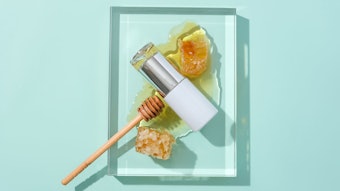
Editor's note: The "Words from Wiechers" series considers the lessons our industry can learn from the late Johann Wiechers, Ph.D. He was an adviser, colleague and leader in the industry until his unexpected passing. Presenting Wiechers's insights is Tony O'Lenick.
The present article reviews Chapter 53 of Wiechers's book, Memories of a Cosmetically Disturbed Mind: 'Is Cosmetic Science Really Bad'? It addresses a question that comes up often in his book and in his various writings; this is the third part in a series where Wiechers writes about a metric he uses to evaluate 'baloney.'
"I am applying the Baloney Detection Kit, as developed by Michael Shermer, monthly columnist of Scientific American, to our beloved subject, cosmetic science," Wiechers writes. "This Baloney Detection Kit consists of 10 easy-to-follow probing questions that can be applied to any type of science and in doing so, allows the applicant to identify whether the science (s)he is judging is real science, borderline science or non-science, aka nonsense.
"Until now I have answered the first three questions and concluded that we were doing OK, albeit just below average. People have written to me and told me that I was too mild on cosmetic science. One person claimed that 'there is good cosmetic science, but the problem is that in our field there is too much ‘very bad science’ published ... and for me, this makes cosmetic science as a whole to score lower than average.'
All is true until shown to be false, but truth without falsification is no truth.
"This, coming from a good cosmetic scientist and personal friend, hurts. Not because he is saying it (friends should tell each other nothing but the truth), but because he feels a need to say it. I told him not to worry; I would be less nice next time. Was I over-promising or will I be under-delivering? Let’s continue with Part III in the series of 'Is Cosmetic Science Really 'Bad?' to find out."
See related: Is Cosmetic Science Really 'Bad'? Part I, Part II, Part IV and Part V
Does the Claim Fit Reality as We Know It?
"The fourth question of the Baloney Detection Kit is: 'Does the claim fit with what we know about how the world works?' An extraordinary claim must be placed into a larger context to see how it fits. If you claim that your customer will look like twenty again thanks to the daily application of your wonder cream, the chances are high that you are not believed. Yes, by your 21-year-old customer, but not by those hordes of ladies that celebrate their 21st birthday for the umpteenth time. The world simply does not work like that. And our cosmetic industry knows that, too.
"Interesting in this sense are the recent ‘break-through’ advertisements for Unilever’s ProAge products where–for a change–real people, i.e., the target group of aging ladies, were shown. Changing people within minutes into movie stars is possible nowadays, but normally requires Photoshop manipulation skills. This is how we know the real world to work. The fact that many of our claims do not fit with how we know the world to work is the main reason why the general public does not consider what we do as serious. In this sense, we are even amongst the worst on the planet. Why? Because each one of us cares about how he or she looks and is being perceived, whereas only a fraction of the world population cares about cars, wines, travels, etc., so the impact of such beauty advertisements is much bigger.
Have Attempts Been Made to Disprove the Claim?
"The fifth question of the Baloney Detection Kit is a painful one for cosmetic science: 'Has anyone gone out of the way to disprove the claim, or has only supportive evidence been sought?' Painful indeed for our industry, but why? First of all, the science philosopher Karl Popper once said: In so far as a scientific statement speaks about reality, it must be falsifiable; and in so far as it is not falsifiable, it does not speak about reality. In other words, all is true until shown to be false, but truth without falsification is no truth, it is untruthful to reality.
"The strength of a scientific argument is not in proving something, but the demonstration that it cannot be anything else but that. And this is exactly what is not happening enough in science generally and in cosmetic science in particular. This is called confirmation bias. We see what we want to see and this confirms us that what we see is right, but how wrong could you be?
"Michael Shermer showed a video during his keynote lecture that opened the 2007 IFSCC Conference in Amsterdam in which he asked us all to look carefully at some men dressed in white in a crowd of people who were playing with a basketball and tell him how many times the ball bounced. The video was shown and there was some discussion among the audience on whether it was 16 or 17 times. Michael said it was 17 and asked the audience to look again but now just to watch the video again without paying any particular attention to anything in particular.
"During the rerun, we started to laugh, all of a sudden, when we noticed three men in black gorilla suits jumping up and down. We did not see them the first time because we were busy looking elsewhere for what we wanted to see: men in white suits playing basketball! This confirmation bias is powerful, persuasive and almost impossible for any of us to avoid. That is why the methods of science that emphasize checking and rechecking, verification and replication, and especially attempts to falsify a claim, are so critical and part of proper true science.
"In cosmetic science we definitely score below the average here on an issue where science as a whole is already scoring low. After all, we do most of our experiments to prove our point, not to disprove our point! On an absolute scale, this means that we, cosmetic scientists, are scoring very low on this fifth question. In cosmetic science, we see the things we want to see and although we cannot report things that we do not see, we also knowingly decide not to tell certain things that we did observe but did not like. We do this on a big scale and a small scale.
We, in the cosmetics industry, need to provide the best products that meet the claims of the product.
"On the big scale, I would like to remind you of Unilever’s Omo Power/Persil Power/Skip Power case where a defective detergent was launched that created holes during washing. On the small scale, I would like to remind you of all your negative results that were never reported to your customers as you didn’t want to discourage them from trying your product. And in case you are still not convinced, look at how your colleagues describe their new actives as the best thing since sliced bread, but only comparing it against benchmarks that date back from pre-World War II days. Do I need to continue?
Preponderance of Evidence
"The sixth question of the Baloney Detection Kit goes as follows: 'Does the preponderance of evidence point to the claimant’s conclusion or to a different one?' This is the classical argument of opponents of creationism. Although museums are filled with evidence of evolution, none of them alone is evidence of it ever happening but the predominance of tens of thousands of evidentiary bits add up to a story of evolution of life. Creationists focus instead on trivial anomalies or currently unexplained phenomena in the history of life. But is this also happening in cosmetic science?
"Blatant mistakes in this aspect I have not really encountered in cosmetic science, although differences of opinion do exist. My recent discussion on whether or not to do placebo-controlled studies is an example of this sixth question. Academics claim that you should always test against a placebo because they are interested in knowing whether an active or a drug works. So are suppliers of active ingredients. Yet, manufacturers of cosmetic products want to show that their products work. They test against untreated skin or against ‘normal routine’ using your own usual product(s).
"But consumer organizations subsequently tell us that our work is not done properly. Why? Because they want to know whether the addition of the expensive active ingredient is justified and therefore wonder to which extent the observed effect can be explained from the cheaper placebo alone! A totally justified question for the consumer but not at all the reason for the end-manufacturers to do their claim substantiation research! After all, if the active had no additional clinical benefit over the placebo, why would the cosmetic industry not sell the placebo product to our customers at less production cost, same market price and therefore higher profit margin?
"So on this sixth question, we are actually doing quite well. But we failed miserably on the fourth and fifth, resulting in a half-way score that is not very positive for our industry. But who knows what the verdict will be on the last four questions. Maybe all is well that ends well. Until then, all I can do is to wish you the very, very best for the New Year. May we all be honest to our profession and true to cosmetic science to protect our industry as well as our companies.
"This is not done via a quick lie to make a quick buck, but by a long-term investment into the desire to let our cosmetic science grow, not only for our companies but for all. That is why local and global organizations such as the SCC (or whatever the name of your local cosmetic science society) and the IFSCC need your support. Not to show how excellent your latest product is, but to show the world how good our cosmetic science is and why it could work for you! Here’s to the future, to 2010 and to cosmetic science!"
The Lesson
This chapter is based upon an article from 2010, so it is a decade old. I believe that this chapter gives keen insights into the mind of a technical genius. It is exactly this training that made Wiechers a genius that also made him a technical perfectionist; recalling that he was a pharmacist, a person that had life and death events depending upon his choices and research. It was in this oven that the technical mind of Wiechers was forged.
While I certainly admire his abilities and quest for pure science, our industry, the cosmetic industry, deals in some senses with a softer science. In the drug business, lack of precision is unforgivable. Drug claims deal with the heart of safe and effective. Cosmetic products are by law not drugs. Our actives are cosmetic actives not drug actives. A product that fails to live up to customer expectations will be abandoned by the consumer with little fanfare.
We in the cosmetic business need to heed the Hippocratic oath: Primum non nocere ("first, do no harm.") We then need to provide the best products that meet the claims of the product. As Wiechers's application of the Baloney Test states above, we are improving and should strive to keep up the improvement year to year. I believe we have improved over the years and that Wiechers would have (a) been pleased with the improvement and (b) would help identify the areas in which we need improvement.










